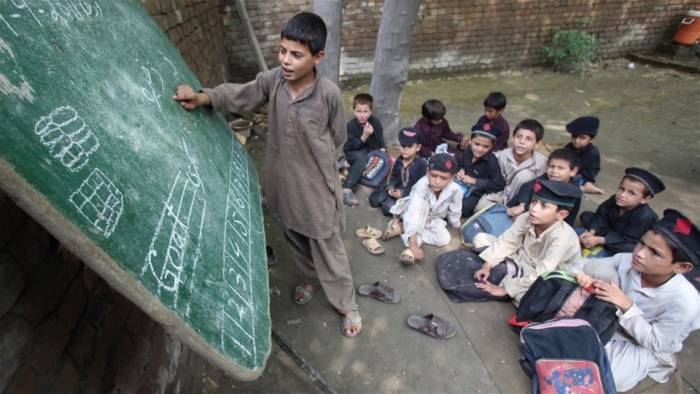Pakistan is among the thickest populated countries in the world, standing at 6th in the list of most populous countries. On the other hand, Pakistan's literacy rate is 55% which is one of the lowest in the world.
Proper and quality education provides lifelong benefits to children. It just doesn’t give knowledge to children but also makes them better persons. Education provides social tolerability in the society and empowers people with better decision-making, problem solving and even multi-tasking abilities. Education is a need for every human being.
Many schools and colleges are being opened in the towns and cities of the country, but those who are living in rural areas are at a greater loss due to a lack of facilities. Even if children want to study, they cannot study, due to a lack of resources, lack of parents' interest and family pressure because they are forced to make their children work to earn money for bread and butter (which is why a greater percentage of child labor can be witnessed in rural areas) or for tending to livestock. The main reason behind illiteracy in Pakistan is that families do not allow children - especially girls - to study.
According to a rough survey of 5 union councils, including Seerani, Kadi Kazia, Abdullah Shah, Muhammad Khan Bhurgari and Pahar Mari of Badin district, there were only 7 girls primary schools, 1 boys middle school, 1 co-elementary school, 5 boys primary schools and the rest out of 80 schools were primary co-education. If we look at enrollment, there did not seem to be a good number of girls enrolled in the all-girls' or co-education schools because parents do not allow them to study.
Awareness sessions should be conducted at village-level with parents regarding the provision of basic education for girls which is necessary for every human being. There should also be an enrollment drive at the village-level to promote literacy, girls or boys' education, so that our literacy rate could be increased.
Furthermore, most of the schools' buildings located in the said union councils were smashed (classroom/s, main gate, corridor, class room’s doors, windows, washrooms in some schools), and there was a non-availability of sufficient furniture, flags, children study resource materials etc..
It has also been observed that there is a shortage of clean drinking water in schools for children, and teachers attendance is irregular which is also why children's education is being adversely affected.
It has so far been observed that the construction of washrooms in the schools in these regions is fine because Non-Governmental Organizations (NGOs) have constructed only washrooms, but their overall condition is unhygienic and some schools have no any system of drainage. Children also demand for classrooms and other basic facilities for their early education.
We request the governmental departments and Non Governmental Organization (NGOs) to kindly take steps for the promotion of literacy and girls' education in rural areas and reconstruct the damaged school buildings and construct new school buildings for girls schools. We also request them to provide all basic facilities including clean drinking water to girls and boys schools for their better study, health and bright future. An enrollment drive at the village-level is the utmost necessity at the moment, in order to convince the parents of children of the important of education - for both girls and boys.






